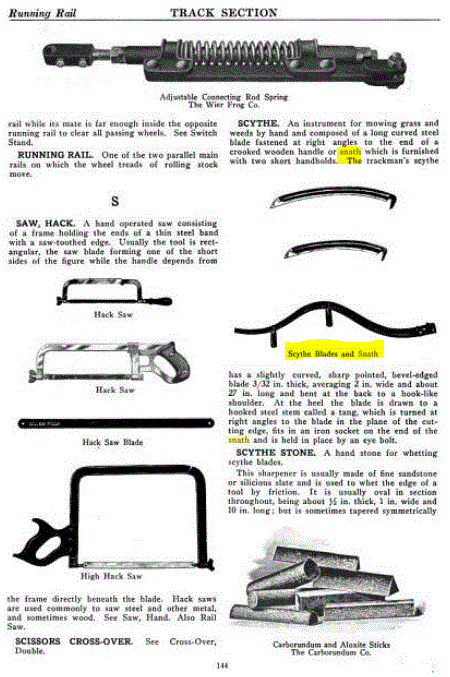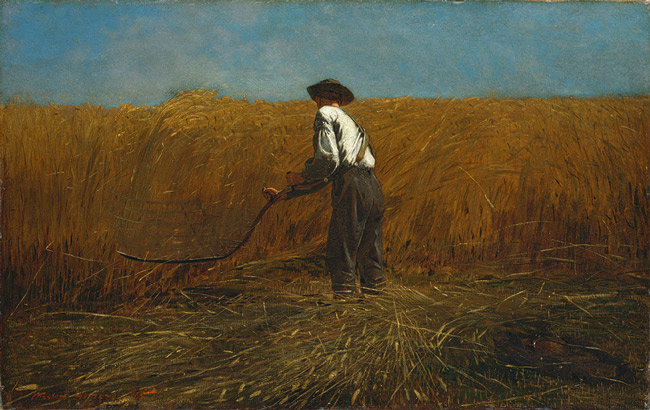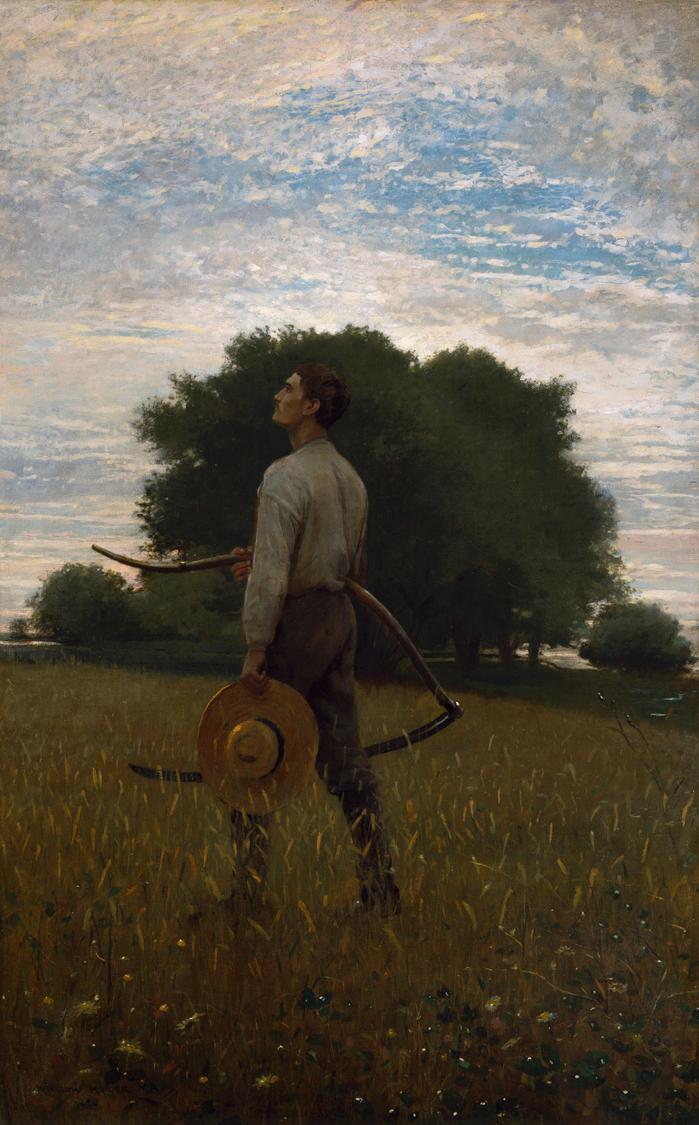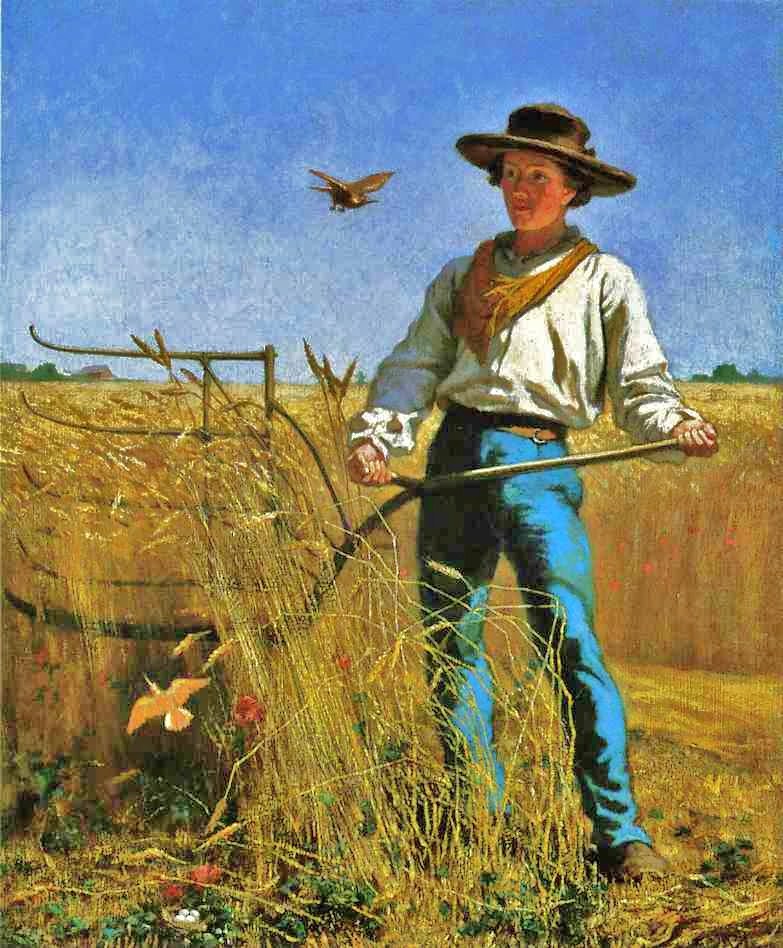I’ve been reading my great-grandfather’s autobiography. It is written by hand with a fountain pen, with flat, steel-grey ink in narrow rows, making each page dense with words.
His handwriting is legible, his letters open and wide, but now and then there are words I cannot make out. A few moments ago I came across one of those, and it took a bit of “detectiving” to figure out what word it was.
In the section I was reading he is writing about growing up on a farm in the 1860s, what he calls “the tool age,” meaning that there was very little mechanization, few machines to lessen the labor. He acknowledges that some did exist, but that his father was “conservative in his methods,” meaning he liked the old fashioned ways.
Describing their farm implements, he wrote, “When I first knew life as a farmer boy there were no mowing machines. Grass was cut with sythes [scythes] – blades 2 1/2 feet long, curved and fastened to a crooked….”
 “…a crooked…”… what? Mathe? Emathe? Ouattie?
“…a crooked…”… what? Mathe? Emathe? Ouattie?
At least I knew he was talking about a scythe, which is a long, narrow, curved blade attached to a long handle, used to cut grass or hay. But his didn’t appear to be fastened to a handle, it was fastened to a…mattie?…enathe?…onattie?

So I Googled the words scythe, blades, curved, fastened, and crooked, and voila!
There it was, in the third search result, a book published in 1921 called Maintenance of Way Cyclopedia, in conjunction with the American Railway Engineering Association,  and having the catchy subtitle, Definitions, Descriptions, Illustrations and Methods of Use of the Materials, Equipment and Devices Employed in the Maintenance of the Tracks, Bridges, Buildings, Water Stations, Signals and Other Fixed Properties of Railways.”
and having the catchy subtitle, Definitions, Descriptions, Illustrations and Methods of Use of the Materials, Equipment and Devices Employed in the Maintenance of the Tracks, Bridges, Buildings, Water Stations, Signals and Other Fixed Properties of Railways.”
Right there on page 144, in the Track section, there were drawings of a scythe’s parts, including handle, here called a snath.
That was it – snath.
I’ve copied the page, at right, and highlighted where the word “snath” appears.
Armed with this new word, I Googled “snath,” curious what Google could tell me about it.
But so unfamiliar with the term was Google, that it asked if I meant, “snatch.”
“No,” I replied, I mean “snath,” a long crooked handle.
And that’s when I found out that the only use of the word “snath” is in conjunction with the word, “scythe.”

If a snath is attached to anything but a scythe, it is not a snath, but a handle.
That’s also when I discovered that there is a scythe revolution afoot.
I was told this by a website called, The One Scythe Revolution.
They even have a page on snaths, including some very handsome Swiss wooden jobs, and an instructional video.

But in case you don’t trust One Scythe Revolution that there really is a scythe revolution, you can visit Scythe Connection, which tells you “what sets us apart from the rest of the scythe-promoting crowd.”
Then there’s Scythe Supply, which has a fetching illustration of a scythe, with callouts as to its various parts.
And of course, Amazon.com, which sells aluminum, steel-clad, and wood snaths.
 Great-grandfather Eggleston didn’t seem impressed with himself for knowing the word, “snath,” and he practically mourns that he was made to use one.
Great-grandfather Eggleston didn’t seem impressed with himself for knowing the word, “snath,” and he practically mourns that he was made to use one.
But you’ll surely impress your friends with the word snath, if ever you happen to be talking scythes.
Otherwise, it’s just a handle.

Very interesting piece of information!!!